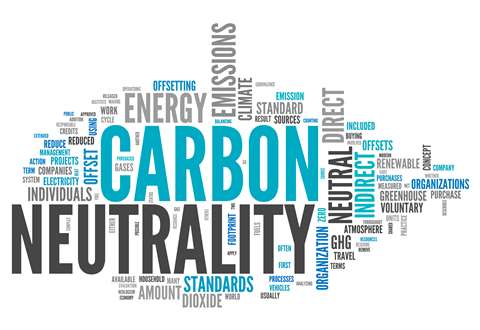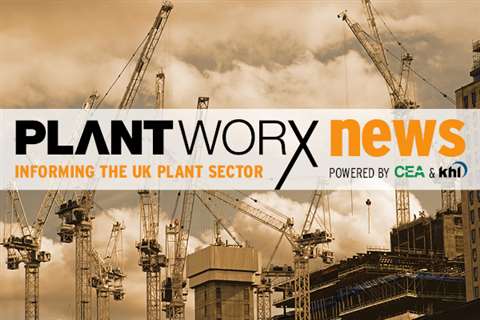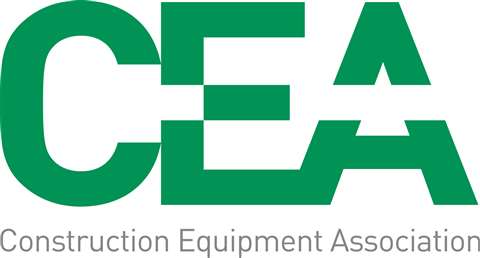What does sustainability really mean for contractors?
02 November 2021
Sustainability, Social Value, ESG (Environmental Social Governance) all sound like buzz words to many of us, but in reality, if you don’t pay attention to what is behind the phrases, you could start losing work to those that are.

Fortunately for the construction and plant sector, starting to learn more doesn’t have to cost the earth, thanks to the formation of the Supply Chain Sustainability School.
It’s funded and supported by the construction industry to provide free information, learning, webinars and more to organisations, business owners and operators alike.
And it also has a plant sector specialist called James Cadman, Head of Consultancy and Carbon at Action Sustainability, who is responsible for managing the plant sector inputs for the Supply Chain Sustainability School.
In this interview, Cadman talks about the school’s Plant Charter and the changes he has witnessed since its launch in April 2020, and highlights how sustainability is having a bigger commercial impact on the construction plant sector.
Cadman says, “Sustainability has always been a driver for individuals and businesses to become better guardians of the environment, so we leave it in good hands for the next generation.
“But we also need to profit from investment in new equipment, technologies and the solutions we need to do this. It’s common sense, really.
 James Cadman, Head of Consultancy and Carbon at Action Sustainability.
James Cadman, Head of Consultancy and Carbon at Action Sustainability.
“There is no way anyone would invest money if that investment doesn’t allow you to do things better, more productively and more efficiently,” he explains.
“It’s why we launched the Plant Charter last year, to support the industry in taking the next steps to a more sustainable future.
What is the Plant Charter?
“The Plant Charter itself is a six page document that is available to download at the supplychainschool.co.uk website,” says Cadman.
“It sets out key commitments for those signing up and was created in collaboration with numerous stakeholders in the industry.
“These included clients like National Highways (formerly Highways England), Network Rail, tier one contractors, plant hire companies, earthworks contractors, OEM’s, technology providers and end users.
Cadman says, “What has been developed is an approach that is grounded in commercial reality, and that has now attracted over 20 signatories, including main contractors like BAM Nuttall, Costain and Morgan Sindall and plant operators like Flannery Plant Hire, GAP Group, L Lynch Plant Hire, M O’Brien, Sunbelt Rentals, Ardent Hire and Thomas Plant Hire, to name but a few.”
What does the Plant Charter aim to accomplish?
“The main objective of the Charter is to drive an improvement of local air quality and reduce greenhouse emissions, reducing the negative impacts caused by the use of construction plant and equipment,” Cadman explains.
“It is built on the work of the Group in developing a set of minimum standards for plant emissions.
“It also aims to encourage investment throughout the sector. For signatories, it’s a clear, public declaration that the individual business is focused on actively reducing the emissions from plant.
Minimum Standards updated for built environmentThe Supply Chain Sustainability School (SCSS) has updated its Minimum Standards document to include technological innovation in the plant category. The document, which can be accessed here, details the minimum engine emission standards needed to reduce the worst effects on air quality and the climate. It was recently published by SCSS’s Plant Group, which aims to develop and facilitate the implementation of best practice sustainable procurement within the category. The group has extensively engaged with construction sector OEMs, plant rental firms, contractors and clients, in order to keep minimum standards in the built environment industry up to date with the ever-changing landscape and advances in technology. Chris Matthew, Strategic Manager, Flannery Plant Hire, said, “The built environment must play their part in tackling climate change and reducing the impacts on local neighbourhoods. “This can only be done through industry collaboration and setting expectations, by keeping the minimum standards up-to-date, ultimately supporting carbon reduction both locally and globally.” |
“Not only to improve local air quality for your colleagues, neighbours and surrounding communities but also to play a part in reducing the effects of global warming.
“And the benefits are clear, as a client, it sends a clear signal that you want your contractors to support your objectives, to be a progressive and sustainable organisation,” he adds.
How does the Plant Charter benefit construction contractors?
“As a contractor, this will strengthen your sustainability statement when it comes to winning work.
“This means organisations will know you are committed to increasing the purchase of equipment that meets the greenhouse gas emissions and air quality standards outlined in our technical supporting documents,” says Cadman.
“They will also know you are focused on delivering Social Value, investing in people, skills, training, and helping other supply chain members.”
Why is Social Value important for construction contractors?
“It’s all down to how Government and major investors run tender and procurement processes,” Cadman explains.
“For example, one thing that really stood out earlier this year was the announcement of the Construction Leadership Council’s (CLC) targets and ambitions for its Construct Zero Performance Framework. It talks about its commitment to reducing diesel plant on site by 78% by 2035.
“Everyone reading this will know it’s a big ask because there’s a lot invested financially and emotionally in all the plant and equipment we have. And the last thing we want to see people do is to sell perfectly good equipment.
“But if you are tendering for major projects that this framework will cover in the future, you will have to show how you are transitioning away from older equipment to newer or cleaner solutions.
Why has sustainability value become so important?
Readers may not be aware of two important and influential pieces of Government policy, published over the last 12 months.
Firstly, Policy Procurement Notice PPN 06/20, announced last year, stated that from June 2020, when big public sector organisations go out to procure, they have to include Social Value in their tender, giving it at least a 10% weighting.

It applies to all contractors who tender for and win work. In practical terms, these businesses have to put information in their response about how they will generate additional Social Value. Clearly, improved air quality for local neighbours and workers plays right into this.
Secondly, the more recent PPN 06/21 requires that, from 30th September 2021, all contractors bidding for work from central government departments and agencies, valued over £5m per year, have to provide a carbon reduction strategy confirming their commitment to achieving Net Zero by 2050 in the UK.
Combined, these two PPNs will drive real sustainable change in the public sector, across all supply chains.
“This is why major contractors are focusing on this area,” says Cadman. “In turn, they are telling shareholders about how they will be ‘Net Zero’ in varying stages and dates in the next 10 to 25 years,” says Cadman.
“Why is this important for the earthworks community? In some cases, the carbon impact of the projects these contractors deliver is over 90% dependent on the supply chain activity.
“It is no surprise to learn, therefore, that both client and tier one contractors are really ratcheting up demands from their supply chains for cleaner and lower emissions equipment.
“This will be further enhanced throughout this year as we head for the COP 26 UN Climate Change Conference in Glasgow from 1st – 12th November, 2021.
“Couple this with Local Authorities outside London like Birmingham and Bristol bringing in ‘Low Emissions’ or ‘Clean Air Zones’ this year, and you can see how the global issues are fast becoming the local ones.”
The big diesel changeover meets Super Deduction tax break.
With the imminent change from Red to White diesel set to add over 45 pence per litre to fuel costs, there has never been a more important time to focus on fuel and carbon savings.
Not only will it help win work, it will also deliver significant cost savings, straight to the bottom line. Think of it in value terms. If you can get more productivity and efficiency out of a drop of fuel, you are ultimately going to be saving a lot more money when the diesel switchover takes place in April 2022.

Cadman says, “It, therefore, makes sense to look at your overall cost of ownership and operation of plant equipment right now.
“Knowing this information and looking at available financial and equipment options, it might be more cost-effective to invest in new equipment.
“This is particularly important to analyse in this year and next as up until March 2023 some businesses can take advantage of the 130% Super Deduction tax break offered by the Government.”
Where can contractors find out more about sustainability?
“It can all seem a bit overwhelming with clients and contractors asking for real-time data on fuel consumption, projected carbon footprint calculations, Social Value impacts, the list goes on.
“This is why the School team is working hard to make information available to businesses of all sizes, and it’s all free if you register your details on the website.
“For example, we are putting together a Lunch ‘n’ Learn hour-long webinar on ‘Best Practice and Low Carbon Fuels’ on 9th November at 2pm. This will feature experts talking about HVO and other fuel types. It’s a particularly important subject right now as HVO is already being mandated onsite by contractors like Skanska.
“And in the future alternative fuels will become even more important. You only have to look at the rise in electric power for smaller plant and the acceleration of hydrogen investment for others to see what is coming down the road to net-zero.”
James concludes, “Of course, we all know that with a whole plethora of power sources, there is never going to be a ‘one size fits all’.
“But we’ve got some stringent targets to meet and will need to work together on what organisations want and what can be provided. That is why we are encouraging more people to use and our resources as educational tools.”

*This article was originally featured in the October 2021 edition of the CEA’s Construction Worx publication.
To register and access all information from the Supply Chain Sustainability School, visit www.supplychainschool.co.uk.
A podcast with Peter Haddock and James Cadman on the subject can also be found by searching for ‘Content With Media’ on your preferred podcast channel.
STAY CONNECTED



Receive the information you need when you need it through our world-leading magazines, newsletters and daily briefings.
CONNECT WITH THE TEAM







